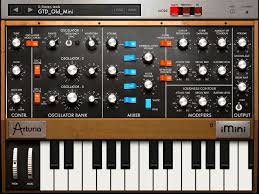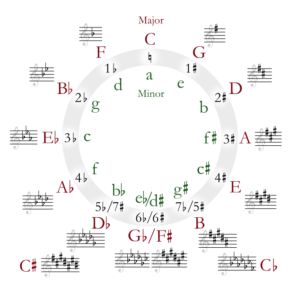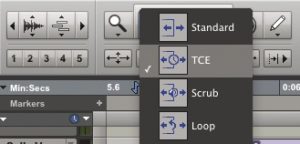Producers that make EDM, use different techniques to make their music including using, virtual instruments, live instrumentation,  and samples. Production techniques will continue to evolve as technology changes.
and samples. Production techniques will continue to evolve as technology changes.
Today, producers are even using cellphone apps to produce their music like Arturia iMini or Propellerhead’s Thor.
But, if you are a beginner or an advanced producer, try using some high quality, well produced samples, to improve the quality of your music.
Download my free EDM samplepack here.
How i use Royalty Free Samples in my Electronic Music
When you make electronic music, you create different parts that are mixed together each track including a bassline, a lead melody, ambient effects, etc.
 A sample is just a starting point which you can chop up, reverse, and rearrange to make the part you want.
A sample is just a starting point which you can chop up, reverse, and rearrange to make the part you want.
When you mix in some samples, you can try to find a sample that fits exactly in your track, but more likely your going to have to ‘edit it‘ to make it fit in by time stretching it to match the tempo, or changing the pitch to fit the key.
You can make a song that is entirely constructed of samples, you can mix parts from different samplepacks from different genres, or you can combine parts from samplepacks with your own synth parts, live instruments, or vocals.
I personally like to combine virtual synths (like Xpand2 that comes with pro tools), live instruments like guitar or piano, and samples that i download to make my parts.
High quality, royalty free samples can be layered into your music to help fill out all frequency ranges and create a full, rich sound that you hear from a professional artist.
I usually add samples towards the end, to fill in the sound, but i’ve made songs entirely out of samples and it sounded really good.
Download my free EDM samplepack here.
What types of samples do you need to produce EDM?
To make a track, you will usually need about 6-8 parts including drums, a bassline, a lead melody, some ambient parts, and some percussion.
You can make these parts with a hardware synths, soft synths, or live instruments yourself, or you can start with some pre-made audio that you download from a samplepack.
Samplepacks are also good if you want to add an instrument that you dont play like piano.
For example, if i want to add some piano part to a song that i have in the key of A minor, i’ll look for a piano samplepack that has parts in the key i need (here’s a piano samplepack that i like).
Then, I’ll chop up the piano samples, pitch shift them, and rearrange them audio to get the progression that i want.
Matching the Key of your Song
One issue you might have when you use samples is that the key of the sample might not  match key of your song.
match key of your song.
In this case, you can use samples that are in a relative key, or you can shift the pitch to match your key.
Sometimes altering the pitch of a sample works great, but other times it can leave artifacts that make the sample unusable.
I’ve noticed that bass frequencies don’t pitch shift well without leaving artifacts, but higher frequency sounds like leads do.
Matching the Tempo
The tempo of a sample will usually not match your song perfectly, but you can  stretch or compress it, to make it fit.
stretch or compress it, to make it fit.
Stretching or compressing audio can leave artifacts if it is more than a 10 bpm difference, which can make it unusable.
Any less of a difference than 10 bpm and it usually will be fine.
Making a Bassline with Samples
You can download some really cool basslines in a samplepack, but in my experience, shifting the pitch of a bassline doesn’t really work that well. It can leave artifacts, that dont occur when you shift higher pitched samples.
One way you can alter a sample bassline is to cut, paste, and rearrange different parts into a bassline that you like.
The bassline is the core of your song, so I work hard to make it sound simple, but interesting. Sometime i’ll spend an hour or more, trying new basslines and patches.
One way to make you basslines more interesting is to use a filter with plugin automation, to sweep the frequency for a cool effect. This will make simple basslines more interesting.
Using Samples and Loops to Make Drums in EDM
When i use drum samples, I like to layer loops and individual samples on top of each other for a really complicated drum track.
Sometimes loops that you buy are separated into top loops, kick and snare, and the full loop. I usually find a kick and snare pattern that i like, then blend them with multiple ‘top loops’, which are usually just the high hat and percussion. You can also use high and low pass filters to separate them even further.
After i have a few loops together, i will add another layer of snare, highhats, kicks, 808’s, and percussion which will give a really full and complicated drum sound.
How i use Ambient Samples in my Electronic Music
One thing i’ve been doing lately is adding ambient samples to fill out my drum n bass tracks.
I usually try adding ambient parts to the into, 2nd half of lead melody, break, and outro.
It sounds good when you add some wide reverbed chords to a lead part that is playing by itself, then bring back in the drums and bassline after 4-8bars.
If you mix a couple ambient samples together, you can get some really complex sounds that make you song sound full and professional.